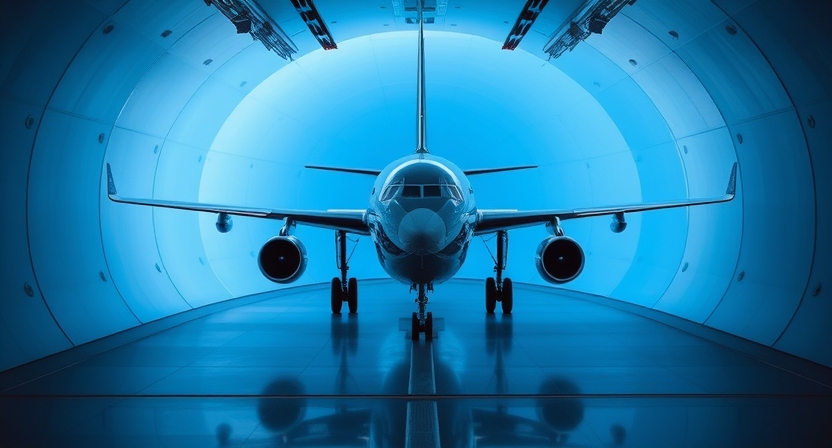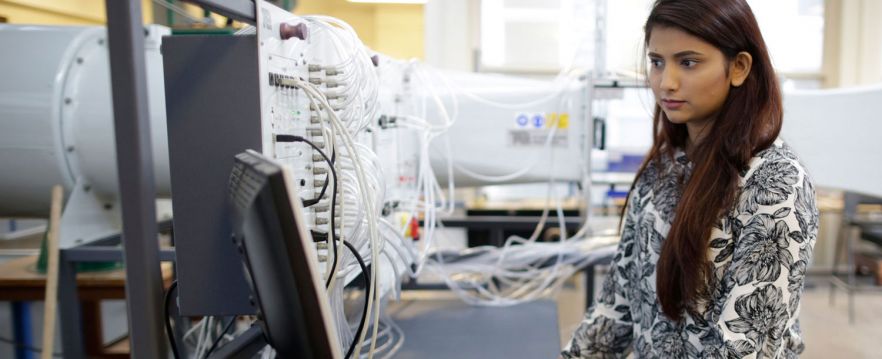What is Aerospace Engineering?
Aerospace Engineering is a subject derived from Aeronautical Engineering, which is concerned with the design of aircraft. Traditionally, this design requires knowledge of:
- aerodynamics (how air flows past objects such as wings)
- materials and structures (to ensure that the aircraft is light but strong)
- stability and control (to be able to safely manoeuvre the aircraft)
- propulsion systems (to provide the force to drive the aircraft forward)
- ... and many other interesting engineering areas.
In order to carry out such design work, aerospace engineers rely on a combination of computer simulations and data from physical experiments, carried out in wind tunnels that provide a controlled air flow in which an aircraft or subsystem can be tested under known conditions.

More recently, it has been recognised that the same principles that are required to design an aeroplane are also incredibly relevant to a number of other engineering design applications. Most immediately, the design of spacecraft (rockets, launch systems, landers, …) is closely aligned to aircraft, requiring the same considerations of aerodynamics, structures, control and propulsion, simply applied to a very different design problem. Thus, it makes sense to consider aircraft and spacecraft design as one so, by widening the scope of the field to also include space systems through incorporating aspects of spacecraft dynamics and rocket propulsion, the subject of Aerospace Engineering came to fruition.
There are a number of other engineering areas which depend on a knowledge of the core skills of Aerospace Engineering, and have therefore also become integrated into the subject. Aerodynamics is crucial to performance of other ground-based transport vehicles, including trains and cars (both automotive road cars and racecars), which is why Formula One teams rely heavily on aerospace engineers in the design of their cars. As renewable sources become key to ensuring sustainability of our energy industry, knowledge of aerodynamics and thermodynamics forms an essential part of developing wind turbines and turbomachinery required for other renewable energy sources. In fact, aerospace engineers actively contribute to a whole range of engineering problems in society, collaborating extensively with bioengineers in the design of heart valves (where fluid mechanics can be applied to cardiovascular systems), robotics experts in developing drones, civil engineers in predicting wind loads on buildings, virologists in predicting the dispersal of droplets in breath, and weather forecasters trying to predict complex patterns.

Aerospace Engineering at QMUL
The undergraduate Aerospace Engineering programme at Queen Mary University of London, which is fully accredited by the Royal Aeronautical Society and the Institute of Mechanical Engineers, helps students develop the technical knowledge, problem-solving skills, critical thinking abilities and teamworking experience to become successful aerospace engineers. Read more about what is covered in the programme, which can either be a 3-year Batchelors (BEng) degree or a 4-year integrated Masters (MEng) degree. There are even options to do a paid placement year in industry or to study abroad at a different university as part of the degree.
As part of the degree, students have considerable opportunities to conduct experiments in the wind-tunnel facilities at QMUL as part of lab practicals, student projects, societies, and research activities. The following video gives you a chance to see some of the facilities used by undergraduate students during their Aerospace Engineering studies.
You will also get the opportunity to get hands-on with the wind tunnels for yourselves during the Finalists’ Day, and can also see the facilities in person as part of our undergraduate Open Days.

